مقدمة
عند التثبيت شاشات عرض LED في مواقف السيارات تحت الأرض، تشكل البيئات الرطبة بلا شك تحديًا كبيرًا.
لا تؤثر الرطوبة على الشاشة على جودة العرض فحسب، بل قد تُسبب أيضًا أعطالًا وتزيد من تكاليف الصيانة. فكيف نضمن استقرار شاشات عرض LED وعمرها الافتراضي في البيئات الرطبة؟
جدول المحتويات
1. لماذا مواقف السيارات تحت الأرض معرضة للرطوبة؟
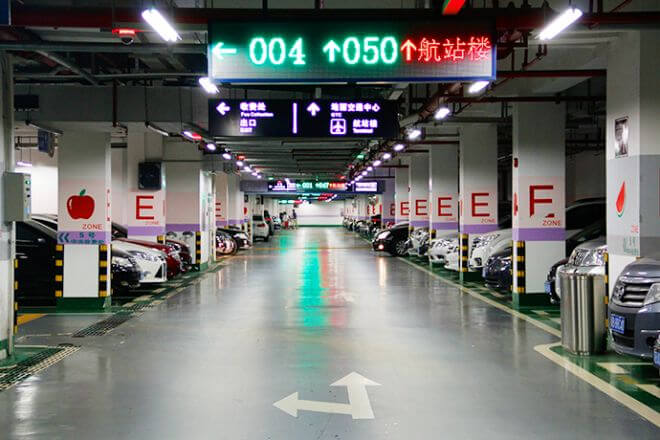
تقع مواقف السيارات تحت الأرض عادة تحت الأرض في المباني، محاطة بالجدران والأرض، مما يجعل دوران الهواء فيها صعبًا.
لا يمكن دخول الهواء النقي، ولا يمكن إخراج الهواء الرطب، ومن السهل تراكم الرطوبة.
إذا لم يتم تصميم نظام التهوية بشكل جيد أو كانت المعدات قديمة، فلن يتمكن الهواء الرطب من الخروج، وتصبح مشكلة الرطوبة أكثر خطورة.
يقع موقف السيارات تحت الأرض بجوار التربة، وهناك رطوبة عالية فيها. تتسرب هذه المياه من الشقوق الصغيرة في الجدران والأرض، مما يجعل الهواء رطبًا.
علاوة على ذلك، فإن موقف السيارات بارد نسبيًا من الداخل. عندما يدخل الهواء الدافئ والرطب من الخارج، يصطدم بالجدران والأرض الباردة.
ويتحول بخار الماء إلى قطرات ماء ويلتصق بالأشياء، مما يجعل موقف السيارات أكثر رطوبة.
في حالة هطول أمطار غزيرة، قد تتدفق مياه الأمطار من مداخل ومخارج مواقف السيارات، أو الفتحات، أو الثقوب الموجودة في أنابيب الصرف، مما يجعل الأرض والجدران مبللة.
إذا لم يتم تصميم نظام الصرف بشكل جيد أو تم حظره، فلن تتمكن من تصريف المياه المتراكمة، وستكون ساحة انتظار السيارات دائمًا رطبة.
درجة الحرارة في موقف السيارات منخفضة، ولكن معدات LED سوف تسخن عند تشغيلها، ودرجة حرارة الغلاف مرتفعة.
بعد إيقاف تشغيل الجهاز، تنخفض درجة حرارة الغلاف فجأة، وعندما يواجه الهواء الرطب المحيط، يتكثف بخار الماء إلى قطرات ماء على سطح الجهاز، مما يجعل الجهاز رطبًا.
2. ما هي تأثيرات البيئة الرطبة على شاشات العرض LED؟
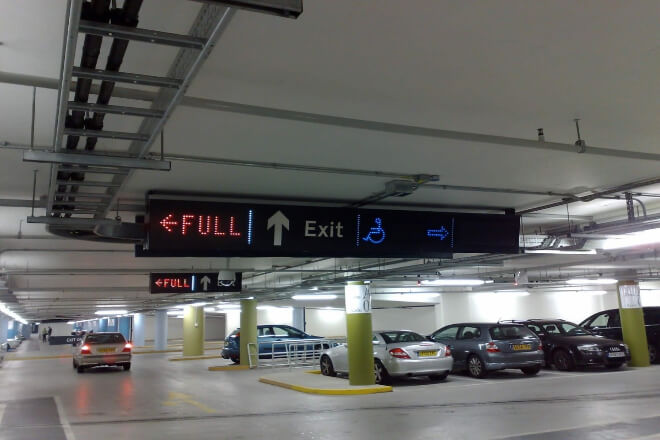
إن تأثير البيئة الرطبة على شاشات العرض LED ليس صغيراً، وينعكس ذلك بشكل رئيسي في الجوانب التالية:
1) الدوائر الكهربائية معرضة للمشاكل
في الأماكن الرطبة، يلتصق بخار الماء الموجود في الهواء بلوحات الدوائر والمكونات الإلكترونية.
يمكن للماء أن يوصل الكهرباء، مما قد يؤدي بسهولة إلى حدوث ماس كهربائي، خاصة في الأماكن ذات الجهد والتيار العالي، حيث يكون الخطر أكبر.
علاوة على ذلك، يمكن للرطوبة أيضًا أن تتسبب في صدأ المكونات الإلكترونية، وخاصة تلك المسامير المعدنية ومفاصل اللحام، والتي سيكون لديها اتصال ضعيف ومقاومة متزايدة، مما يجعلها سهلة الفشل.
والأسوأ من ذلك هو أن الرطوبة يمكن أن تجعل أيضًا أداء العزل للوحة الدائرة أسوأ، مما قد يؤدي بسهولة إلى تسرب الكهرباء.
لا يعد من السهل كسر المعدات فحسب، بل قد تتسبب أيضًا في حدوث صدمة كهربائية.
2) من السهل أن تتحول حبات المصباح إلى اللون الأسود، ويصبح الضوء خافتًا
الرطوبة ضارة بشكل خاص بخرزات مصابيح LED. هيكلها الداخلي هش للغاية، ويمكن لبخار الماء أن يتسرب بسهولة، مما يتسبب في رطوبة الفوسفور والرقائق داخلها.
بهذه الطريقة، لن يصدر الفوسفور الضوء بشكل فعال، وسيتدهور أداء الشريحة أيضًا، وسيصبح الضوء باهتًا أكثر فأكثر.
علاوة على ذلك، يُسبب بخار الماء شيخوخةً لقشرة خرز المصباح. بمرور الوقت، يتغير لون خرز المصباح، بل قد يتحول إلى اللون الأسود، مما يُفسد مظهر الشاشة.
3) بطاقات التحكم والموصلات سهلة الكسر
قد تتسبب الرطوبة في صدأ الأجزاء المعدنية، مثل بطاقات التحكم والموصلات. بعد الصدأ، تزداد مقاومة التلامس، مما يُصعّب نقل الإشارة، بل ويؤدي إلى تعطلها مباشرةً.
علاوة على ذلك، فإن الرطوبة سوف تسبب الرطوبة على سطح لوحة الدائرة، وسوف تتعطل الإشارة بسهولة أثناء النقل، وسوف يتدهور تأثير العرض.
في حالة البلل، قد يتمدد الغلاف البلاستيكي للموصل أو يتشوه، ولن يكون القابس والمقبس على اتصال جيد، وستكون الإشارة أسوأ.
4) عمر عرض أقصر وتكاليف صيانة متزايدة
تؤثر البيئة الرطبة بشكل كبير على عمر شاشة LED. بسبب الرطوبة، تكون أجزاء الشاشة المختلفة عرضة للكسر، مما يؤدي إلى تقصير عمرها الافتراضي، مما يتطلب إصلاحًا أو استبدالًا متكررًا.
بهذه الطريقة، يزداد عبء الصيانة وترتفع تكلفتها. فالإصلاحات المتكررة واستبدال القطع لن يؤثرا فقط على الاستخدام العادي للشاشة، بل سيكلفك أيضًا المزيد من المال.
3. تدابير الحماية الأساسية لشاشات LED للتعامل مع الرطوبة
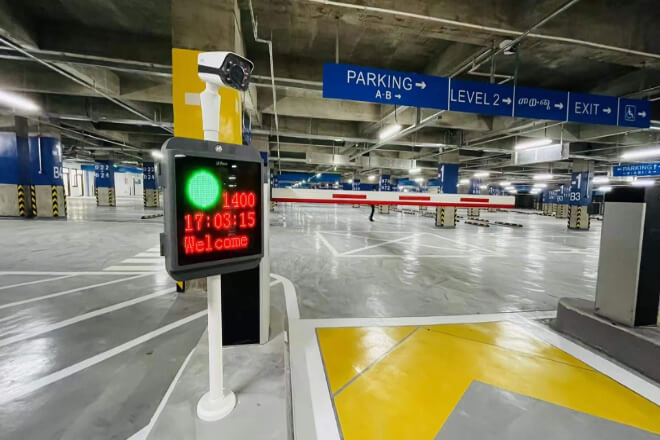
في البيئات الرطبة، يجب اختيار وحدات LED مع مستويات حماية عالية، يُعدّ مستوى الحماية IP65 وIP67 من المستويات الشائعة.
IP65 يمكنه منع دخول الغبار ومقاومة نفثات المياه منخفضة الضغط، وهو مناسب للبيئات الرطبة العامة.
يمكن غمر IP67 في الماء لفترة قصيرة دون أن يتأثر، وهو مناسب للبيئات الرطبة الأكثر شدة.
تعتبر الوحدة ذات مستوى الحماية العالي بمثابة وضع طبقة من "الملابس المقاومة للماء" على شاشة LED.
يمكنه منع بخار الماء والغبار بشكل فعال من دخول الوحدة، وحماية الدائرة الداخلية وحبات المصباح، والسماح لشاشة العرض بالعمل بشكل طبيعي في بيئة رطبة.
ال مزود الطاقة يُعدّ نظام التحكم والتشغيل قلب شاشة LED. عند تعرضها للرطوبة، قد تُصاب الشاشة بأكملها بالصدمة. لذلك، يجب إغلاقها وعزلها عن الرطوبة.
يمكن تغليف نظام إمداد الطاقة والتحكم بغلاف محكم لمنع دخول الرطوبة وبخار الماء. قم بتركيب حلقة مطاطية مقاومة للماء عند الواجهة لضمان إحكام إغلاقها.
يمكنك أيضًا ملء الفجوات في نظام إمداد الطاقة والتحكم بالداخل واستخدام مواد مقاومة للرطوبة لتعزيز الأداء المقاوم للرطوبة.
بهذه الطريقة، حتى لو كان الجو رطبًا في الخارج، يمكن لنظام إمداد الطاقة والتحكم أن يظل جافًا ويعمل بشكل طبيعي.
تعتبر الخزائن المقاومة للرطوبة وشرائط الختم بمثابة "دروع" لمنع تسرب الرطوبة.
أضف خزانة مقاومة للرطوبة إلى شاشة LED، وقم بلف الشاشة بالكامل، وتشكيل مساحة مغلقة نسبيًا، وتقليل ملامسة الرطوبة.
ركّب شرائط مانعة للتسرب عند مفاصل الصندوق وإطار شاشة العرض لضمان فعالية الختم. يجب أن تكون شرائط الختم مقاومة للعوامل الجوية ومرنة.
على سبيل المثال، يمكن لشرائط الختم السيليكونية الحفاظ على الختم لفترة طويلة.
بفضل الصندوق المقاوم للرطوبة وشرائط الختم، يصعب على الرطوبة غزو الجزء الداخلي من شاشة العرض.
تعتبر لوحة PCB مكونًا مهمًا لشاشة العرض LED، ومن السهل أن تصبح "مريضة" في بيئة رطبة.
قم بوضع طبقة من "الفيلم الواقي" على لوحة الدائرة المطبوعة باستخدام طلاء مقاوم للرطوبة والعفن ورذاذ الملح لمنع بخار الماء والغبار من الالتصاق بلوحة الدائرة وتقليل خطر التآكل والقصر الكهربائي.
عند تطبيق الطلاء ثلاثي الطبقات، قم بتغطية لوحة PCB بأكملها بالتساوي، وخاصة الأجزاء الرئيسية مثل وصلات اللحام ودبابيس المكونات الإلكترونية.
بهذه الطريقة، يمكن للوحة PCB الحفاظ على الأداء الجيد في البيئة الرطبة وإطالة عمر خدمتها.
إن تحسين نسبة الرطوبة في البيئة المحيطة يعد طريقة جيدة للتعامل مع البيئة الرطبة.
قم بتركيب جهاز مزيل للرطوبة في بيئة تركيب شاشة العرض LED لإزالة الرطوبة من الهواء بشكل منتظم وتقليل الرطوبة.
ثم قم بتثبيت معدات إمداد الهواء، واستنفاد الهواء الرطب من خلال التهوية، وإدخال الهواء الجاف، والحفاظ على البيئة المحيطة بالشاشة جافة.
يمكنك أيضًا تثبيت مستشعر الرطوبة، وعندما تتجاوز الرطوبة القيمة المحددة، سيتم تشغيل نظام إزالة الرطوبة وتزويد الهواء تلقائيًا.
وبهذه الطريقة، يمكن للشاشة أن تبقى دائمًا في بيئة جافة، مما يقلل من المشاكل الناجمة عن الرطوبة.
4. لا يمكن تجاهل تفاصيل مقاومة الرطوبة أثناء مرحلة التركيب والبناء
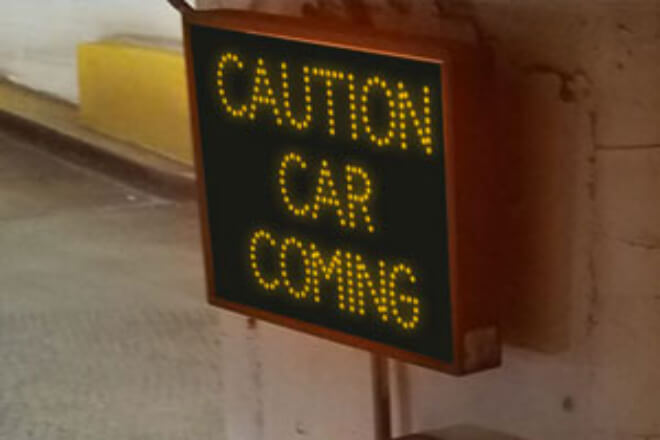
عند تركيب شاشة LED، يجب عدم تجاهل التفاصيل الصغيرة الخاصة بعزل الرطوبة؛ حيث يمكن لهذه التفاصيل الصغيرة أن تساعد الشاشة على التحمل لفترة أطول في البيئة الرطبة.
وفيما يلي نقاط مقاومة الرطوبة التي يجب الاهتمام بها أثناء مرحلة التثبيت:
1) يجب فصل الأرض والجدار عن الرطوبة
قبل التركيب، يجب أولاً معالجة مشكلة رطوبة الأرض والجدران. فالأرض والجدران هما المصدر الرئيسي للرطوبة، خاصةً في الأقبية أو الأماكن الرطبة.
يمكنك استخدام حصيرة مقاومة للرطوبة لفصل الشاشة عن الأرض، تمامًا مثل وضع طبقة من "الحصيرة المقاومة للماء" للشاشة.
أو قم بتركيب شاشة LED في الأعلى، مما يسمح بتهوية الجزء السفلي منها ومنع تراكم الرطوبة. باختصار، يُحفظ بعيدًا عن الجذور.
2) عند التوصيل، لا تترك الأسلاك "عارية"، بل لفها بأنابيب وأخاديد مقاومة للماء
عند توصيل الأسلاك والتوجيه، لا تترك الأسلاك وخطوط الإشارة مكشوفة. ففي البيئات الرطبة، تكون الأسلاك المكشوفة عرضة للرطوبة بسهولة، مما قد يُسبب قصرًا في الدوائر أو انقطاعًا في الإشارة.
لذلك، من الضروري لف الأسلاك بأنابيب وأخاديد مقاومة للماء، والتي لا يمكنها فقط منع بخار الماء ولكن أيضًا منع تلف الأسلاك.
سيكون من الأفضل أن تستخدم كابلات ذات أداء جيد في مقاومة الماء، مما سيوفر طبقة إضافية من الحماية.
3) يجب أن تكون اللحامات والواجهات محكمة الغلق
طبقات وواجهات الشاشة هي الأماكن التي يُحتمل أن تُشكّل فيها الرطوبة ثغرات. أثناء التركيب، يجب سد هذه الأماكن جيدًا.
يجب سد الفواصل بين الخزائن بإحكام باستخدام شرائط مانعة للتسرب عالية الجودة، دون ترك أي فجوات.
يجب إحكام إغلاق وصلة الطاقة ووصلة الإشارة بحلقات مطاطية مقاومة للماء أو مواد مانعة للتسرب لمنع تسرب الرطوبة عبرها. إذا وُجدت هذه التفاصيل الصغيرة، فسيكون من الصعب دخول الرطوبة.
4) يجب أن يكون موضع التركيب أعلى، مع تجنب المناطق المنخفضة التي تتراكم فيها المياه
يُعدّ وضع التركيب بالغ الأهمية أيضًا. ففي الأماكن الرطبة، تكون المناطق المنخفضة أكثر عرضة لتراكم المياه وزيادة الرطوبة.
لذلك، عند التركيب، حاول اختيار موضع أعلى وتجنب المناطق المنخفضة حيث تتراكم المياه.
إذا لم يكن هناك حقًا طريقة لتجنب ذلك، أضف حاجزًا مقاومًا للماء أسفل شاشة العرض، أو فكر في طرق أخرى مقاومة للماء.
عند التثبيت، قم بهذه التفاصيل الصغيرة المقاومة للرطوبة جيدًا، وستكون شاشة العرض أكثر "صلابة" في البيئة الرطبة، وتدوم لفترة أطول، وتوفر الكثير من المتاعب في الصيانة المستقبلية.
5. كيفية اختيار شاشة LED مناسبة للبيئة الرطبة؟
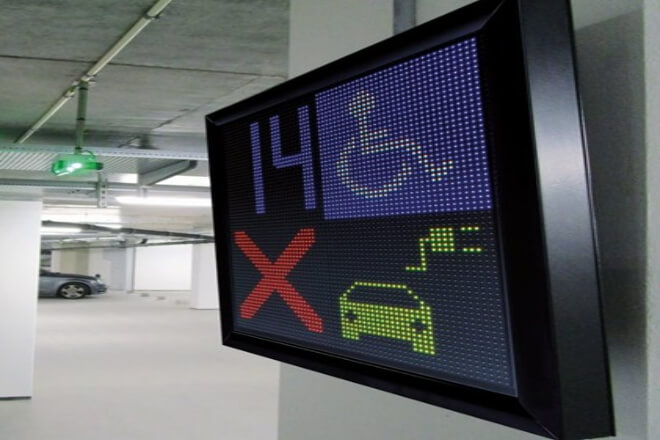
1) التحقق بوضوح من مستوى حماية المنتج وتقرير الاختبار
عند شراء شاشة LED، يجب عليك أولاً التحقق من مستوى حمايتها. هذا المستوى بالغ الأهمية، ويُمكّنك من معرفة مدى تحمّل الشاشة للرطوبة.
على سبيل المثال، IP65 و IP67. IP65 يمكنه منع الغبار وأعمدة المياه ذات الضغط المنخفض، وهو مناسب للأماكن الرطبة بشكل عام؛ IP67 أقوى، ومن الجيد نقعه في الماء لفترة قصيرة.
بالإضافة إلى النظر إلى المستوى، يجب عليك أيضًا التحقق مما إذا كان هناك تقرير اختبار صادر عن منظمة معتمدة لإثبات أن الشاشة مقاومة بالفعل للرطوبة والماء والغبار.
تعتبر هذه التقارير بمثابة "تقرير الفحص البدني" للشاشة، والذي يمكن أن يعطيك النتيجة النهائية.
2) أعطِ الأولوية للخزائن المغلقة بالكامل أو الخزائن المصنوعة من سبائك المغنيسيوم والألومنيوم
في البيئات الرطبة، يُعدّ غلاف شاشات LED بالغ الأهمية. فالخزانة المغلقة بالكامل تُشبه طبقةً واقيةً من الرطوبة للشاشة، إذ تمنع دخول الرطوبة والغبار، وتحمي الدوائر الكهربائية وخرزات المصابيح بداخلها.
من الأفضل اختيار خزانة مصنوعة من سبائك المغنيسيوم والألومنيوم. هذه المادة ليست خفيفة الوزن فحسب، بل متينة للغاية ومقاومة للتآكل.
يمكن استخدامه لفترة طويلة، حتى في البيئات الرطبة. كما يُساعد على تبديد الحرارة وإطالة عمر الشاشة.
3). اسأل الشركة المصنعة عما إذا كانت لديها خبرة في تطبيقات المشاهد الرطبة
عند البحث عن الشركة المصنعة، لا تنس أن تسألها إذا كانت لديها خبرة في استخدام شاشات LED في البيئات الرطبة.
على سبيل المثال، في أماكن مثل الأقبية وشاطئ البحر، فإن المصنعين ذوي الخبرة سوف يعرفون بالتأكيد كيفية جعل الشاشة تعمل بشكل صحيح في البيئات الرطبة.
يمكنك أن تطلب منهم عرض نماذج سابقة لك لترى أداء منتجاتهم في بيئات عمل حقيقية. يتمتع المصنعون ذوو الخبرة بتصميم منتجات أكثر موثوقية وخدمة ما بعد البيع.
4) تقييم آلية الاستجابة لما بعد البيع وشروط الضمان
في بيئة رطبة، قد تكون احتمالية فشل شاشة LED أعلى، لذا فإن خدمة ما بعد البيع التي تقدمها الشركة المصنعة مهمة جدًا.
التحقق مما إذا كان بإمكانهم الاستجابة في وقت قصير وما إذا كان لديهم خدمات الدعم الفني والصيانة الكافية.
لا تنس التحقق من شروط الضمان بعناية للتأكد من أن الضمان يغطي الأعطال في البيئات الرطبة.
قد تقدم بعض الشركات المصنعة ضمانًا إضافيًا لهذه البيئة الخاصة، وهو ما يعد ضمانًا رائعًا.
6. الخاتمة
من خلال المحتوى أعلاه، لدينا فهم شامل لتأثير البيئة الرطبة لمواقف السيارات تحت الأرض على شاشات LED واستراتيجيات التكيف.
آمل أن تساعدك هذه المعلومات العملية في اختيار التدابير المناسبة لمقاومة الرطوبة لضمان قدرة شاشة LED على العمل بثبات في بيئة رطبة.
أخيرًا، إذا كنت تريد معرفة المزيد عن شاشات LED، يرجى الحصول على اتصال معنا.
مقالات أخرى قد تهمك:
